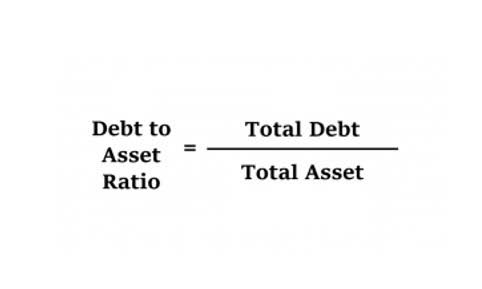
While that’s an excellent system for keeping track of leftovers and reducing food waste, there’s so much more to it than fridge management. Selecting between FIFO and LIFO depends on your business’s unique circumstances. Both methods have their strengths and weaknesses, and understanding these is key to making an informed decision. The return of excess materials, initially issued to the factory for a particular job, to the storeroom is treated as the oldest stock on hand. Specifically, FIFO assumes that the first cost received in stores is the first cost that goes out from the stores. This team of experts helps Finance Strategists maintain the highest level of accuracy and professionalism possible.

What Is the FIFO Inventory Method? First-In, First-Out Explained
- The company’s accounts will better reflect the value of current inventory because the unsold products are also the newest ones.
- The opposite to FIFO, is LIFO which is when you assume you sell the most recent inventory first.
- This will ensure that your balance sheet will always be up to date with the current cost of your inventory, and your profit and loss (P&L) statement will reflect the most recent COGS and profit numbers.
- It ensures that the inventory valuation reflects the most recent costs, giving a clearer view of the financial state of the business.
- It’s beneficial in industries with variable demand, as it offers flexibility in managing inventory levels.
Under the FIFO Method, inventory acquired by the earliest purchase made by the business is assumed to be issued first to its customers. In accounting, First In, First Out (FIFO) is the assumption that a business issues its inventory to its customers in the order in which it has been acquired. The first in, first out method is an effective way to process inventory, as it keeps your stock fresh, with few to no items within your inventory becoming obsolete. LIFO systems are easy to manipulate to make it look like your business is doing better than it is.
Disadvantages of the FIFO Method
One of the most significant advantages of LIFO is its ability to reduce taxable net income. By reporting higher costs of goods sold, LIFO lowers your profits, which, in turn, reduces your tax obligations. This can result in substantial tax savings, improving cash flow and offering more financial flexibility. In addition to being allowable by both IFRS and GAAP users, the FIFO inventory method may require greater consideration when selecting an inventory method. Companies that undergo long periods of inactivity or accumulation of inventory will find themselves needing to pull historical records to determine the cost of goods sold.

FIFO vs. Moving Average Costing Methods in Valuing Raw Materials Inventory
The Specific Identification Method assigns a specific cost to each inventory item, making it the most accurate method for tracking high-value or unique products. VMI improves the efficiency of supply chain management by giving suppliers more control over stock levels while reducing the burden on retailers. This collaborative approach benefits both parties by lifo formula enhancing inventory management processes and ensuring smooth supply chain operations.

Example of FIFO Method to Calculate Cost of Goods Sold

Implementing FIFO can significantly impact financial statements, tax liabilities, and overall profitability. This article delves into the intricacies of the FIFO method, providing a comprehensive guide on what it is, how it works, and its advantages and disadvantages. This article has provided an in-depth exploration of the FIFO method, covering its principles, implementation steps, advantages, and disadvantages. Key takeaways include the method’s alignment with actual inventory flow, its financial benefits, and the potential for higher tax liabilities. Choosing the right inventory valuation https://www.bookstime.com/ method is crucial for accurate financial reporting and efficient inventory management. While FIFO offers numerous advantages, it is essential to consider the specific needs and circumstances of your business.
- In the FIFO Method, the value of ending inventory is based on the cost of the most recent purchases.
- As a result, LIFO doesn’t provide an accurate or up-to-date value of inventory because the valuation is much lower than inventory items at today’s prices.
- During periods of rising prices, FIFO typically results in lower COGS and higher profits, as older, cheaper inventory is sold first.
- Repurposed food packaging is fantastic for pantry storage, especially if you’re loyal to a certain brand and have a ton of the same containers.
- Do you routinely analyze your companies, but don’t look at how they account for their inventory?
Multi-Location Inventory Management: Best Practices & Guide
- FIFO is the best method to use for accounting for your inventory because it is easy to use and will help your profits look the best if you’re looking to impress investors or potential buyers.
- FIFO states that if the bakery sold 200 loaves on Wednesday, the COGS (on the income statement) is $1 per loaf because that was the cost of each of the first loaves in inventory.
- Adopting the FIFO method can streamline inventory management and enhance financial accuracy, but successful implementation requires careful planning and execution.
- At Finance Strategists, we partner with financial experts to ensure the accuracy of our financial content.
- Drop shipping is an inventory method where businesses avoid holding stock by having suppliers ship products directly to customers after an order is placed.
- This means the value of inventory is minimized and the value of cost of goods sold is increased.
Under the LIFO method, assuming a period of rising prices, the most expensive items are sold. This means the value of inventory is minimized and the value of cost of goods sold is increased. This means taxable net income is lower under the LIFO method and the resulting tax liability is lower under the LIFO method. Since LIFO uses the most recently acquired inventory to value COGS, the leftover inventory might be extremely old or obsolete. As a result, LIFO doesn’t provide an accurate or up-to-date value of inventory because the valuation is much lower than inventory items at today’s prices. Also, LIFO is not realistic for many Online Accounting companies because they would not leave their older inventory sitting idle in stock while using the most recently acquired inventory.

By the same assumption, the ending inventory value will be the cost of the most recent purchase ($4). While FIFO refers to first in, first out, LIFO stands for last in, first out. This method is FIFO flipped around, assuming that the last inventory purchased is the first to be sold. LIFO is a different valuation method that is only legally used by U.S.-based businesses. However, FIFO is the most common method used for inventory valuation.
